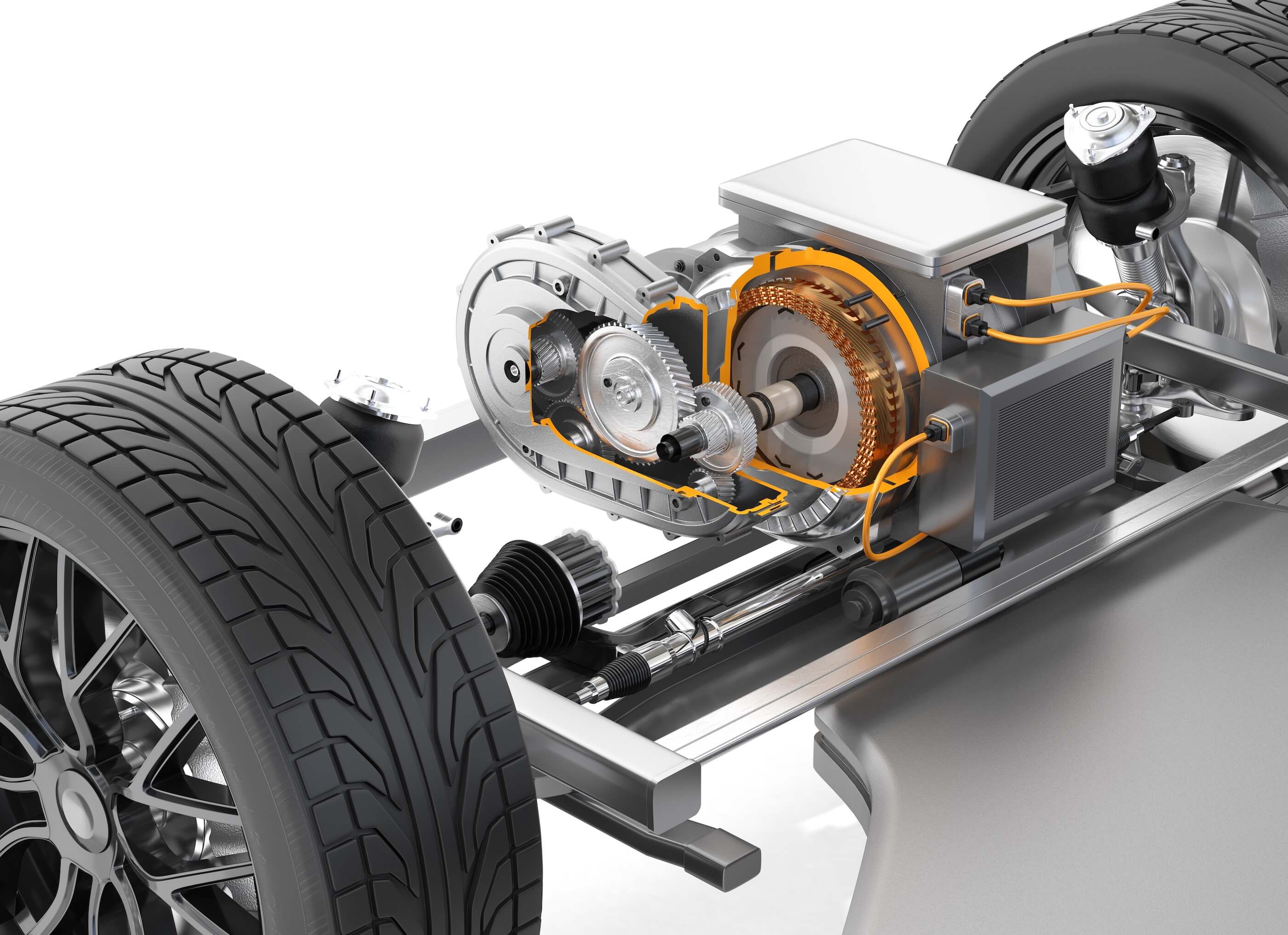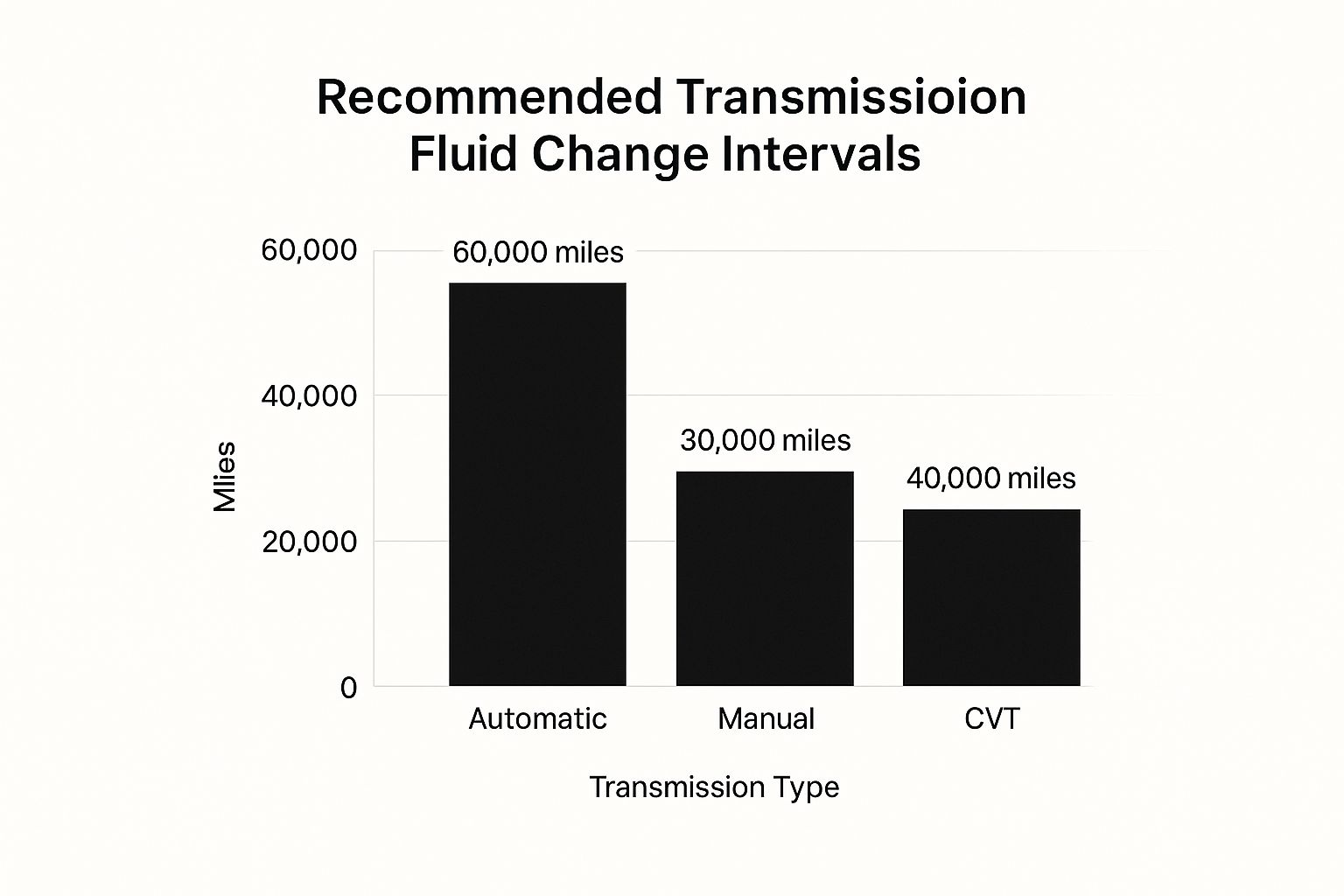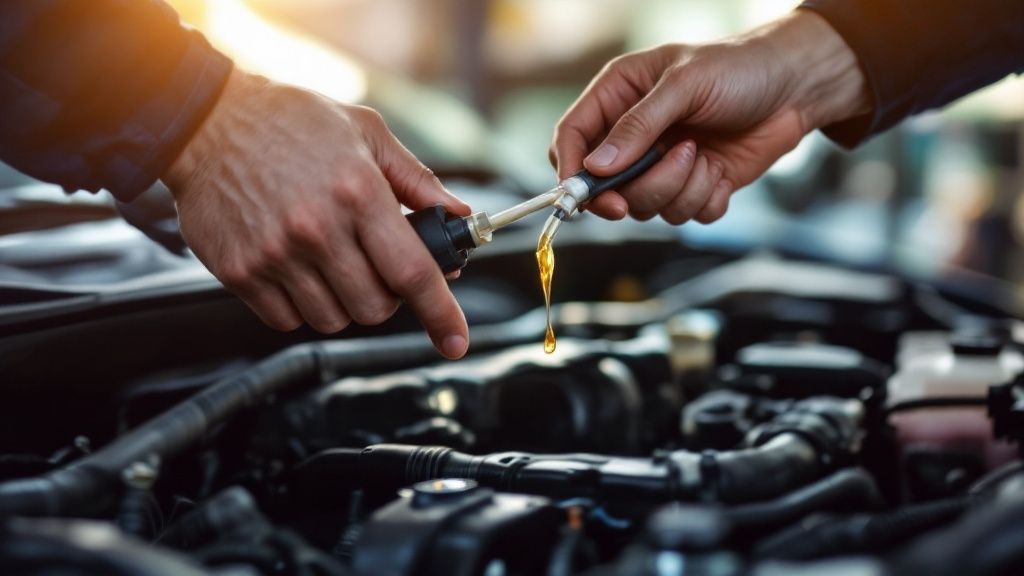
Transmission fluid is essential for the health of your vehicle’s transmission system. It’s not an optional extra; it’s the lifeblood that keeps everything running smoothly. This vital fluid performs several key functions, directly impacting both the performance and the lifespan of your transmission.
Transmission fluid lubricates the intricate moving parts within the transmission, minimizing friction and wear. It also plays a critical role in regulating temperature, preventing overheating and potential damage. Ignoring the maintenance of this essential fluid can lead to costly repairs down the line.
The key to maintaining a healthy transmission isn’t just about hitting a specific mileage target; it’s about preserving the effectiveness of the transmission fluid itself. Over time, this fluid degrades, losing its lubricating properties and becoming contaminated with debris.
Just like any other fluid in your vehicle, transmission fluid is subject to wear and tear, especially under demanding driving conditions. This degradation can cause significant problems, including slipping gears, rough shifting, and ultimately, complete transmission failure.
The concept of “lifetime” transmission fluid is a misleading and potentially harmful myth. While some manufacturers use the term, it doesn’t mean the fluid never needs changing. Even these “lifetime” fluids have a limited lifespan.
This misconception often leads to neglected maintenance, contributing to premature transmission failure and resulting in expensive repairs. These repairs could have been avoided with regular fluid changes. Think of it like engine oil—even synthetic oil requires changing eventually.
The frequency of transmission fluid changes depends largely on the type of transmission in your vehicle. Automatic, manual, CVT (Continuously Variable Transmission), and dual-clutch transmissions all have unique fluid requirements.
For example, CVT transmissions often require more frequent changes than traditional automatics. The demands on manual transmission fluid also vary based on the vehicle and driving style. Knowing your transmission type is essential for proper maintenance.
Consult your owner’s manual for recommended change intervals for your specific vehicle or visit a trusted auto repair shop like Kwik Kar for expert advice. Understanding this key difference can prevent significant problems and save you money on costly repairs later.
Your transmission is constantly communicating, often through subtle cues. Recognizing these signs is vital for preventing expensive damage and ensuring smooth operation. This means paying close attention to your vehicle’s behavior and addressing unusual symptoms quickly.
Difficulty shifting is a major indicator of transmission trouble. If your car hesitates, jerks, or refuses to shift, your transmission fluid might be the problem. This can be especially apparent when shifting from park to drive or reverse. A slipping transmission, where the engine revs but the car doesn’t accelerate properly, is another serious warning. Transmission slipping can be a sign of significant underlying problems.
Unusual noises emanating from the transmission are another clear sign of potential issues. These can include whining, humming, grinding, or clunking. Such noises usually suggest metal-on-metal contact inside the transmission due to insufficient lubrication from degraded fluid. Ignoring these auditory warnings can lead to major damage.
A burning smell, often described as acrid or sulfurous, indicates that your transmission fluid is overheating and deteriorating. This requires immediate attention. Overheated fluid loses its ability to lubricate, accelerating wear on internal components.
Regularly checking your transmission fluid is a simple yet crucial part of preventative maintenance. For vehicles equipped with dipsticks, ensure the engine is running and warm before checking. The fluid should be a translucent red or pink. A dark brown or black color, or a burnt smell, signals the need for a change.
Many modern vehicles, however, no longer have traditional dipsticks. This reflects how industry standards have changed. Transmission fluid changes have evolved significantly, influenced by manufacturer recommendations. Aisin Seiki, a Fortune Global 500 transmission manufacturer, now recommends changes as frequently as every two years in some cases, regardless of mileage. This contrasts with the older “sealed for life” approach, which often resulted in premature failures, particularly in automatic transmissions.
Industry best practices, influenced by companies like Aisin, acknowledge that transmission fluid degrades over time, losing its protective properties. This often necessitates changes every 24 months, or between 30,000 to 60,000 miles for manual transmissions and 60,000 to 100,000 miles for automatics, depending on use and manufacturer guidelines. Explore this topic further. In vehicles without dipsticks, checking the fluid typically requires specialized equipment and a professional.
By recognizing these warning signs and performing regular maintenance, you can avoid major transmission issues and prolong your vehicle’s lifespan. Early detection is key to avoiding expensive repairs.

The infographic above gives a general idea of how often you should change your transmission fluid, depending on the type of transmission you have. You’ll notice these intervals can be quite different. While these numbers are a good place to start, there’s more to it than just following a mileage recommendation. One key sign your transmission needs attention is slipping. For a helpful look at how to spot this, check out this article on transmission slipping.
Different transmissions have unique designs, operating temperatures, and fluid requirements. This means a “one-size-fits-all” approach to fluid changes just doesn’t cut it. For instance, Continuously Variable Transmissions (CVTs), known for their smooth shifting, often require more frequent fluid changes than traditional automatic transmissions. This is because of the specialized fluid they use and the extra stress the CVT’s pulley system puts on it.
Some car makers say their transmissions have “lifetime” fluid. However, this term is often misunderstood. “Lifetime” seldom means the fluid never needs changing; it usually means the expected lifespan of the transmission itself. Over time, even “lifetime” fluids break down, losing their protective qualities and raising the risk of transmission trouble. This can lead to early wear and tear and, eventually, costly repairs.
Driving habits, climate, and your specific vehicle model also play a big part in determining when to change your fluid. These factors heavily influence transmission fluid change intervals. Industry analyses show manual transmissions typically need fluid changes every 30,000 to 60,000 miles, while automatics usually fall between 60,000 and 100,000 miles. But under harsh conditions, like frequent towing or stop-and-go city driving, these intervals are often cut in half. You can find more detailed statistics here.
So, how can you figure out the right interval for your car? The best place to start is your owner’s manual. Check the section on “severe service” recommendations, as these often provide more realistic intervals for many drivers. You can also check your vehicle manufacturer’s website or talk to a trusted mechanic for personalized advice. Don’t just rely on generic mileage numbers. By understanding your transmission type and your driving habits, you can protect your transmission and avoid expensive repairs in the future.
The table below, “Transmission Fluid Change Intervals by Type,” provides a more detailed comparison of recommended change intervals for different transmission types under normal and severe driving conditions. It also lists some common signs that indicate your transmission fluid might need changing.
| Transmission Type | Normal Driving Conditions | Severe Driving Conditions | Signs Fluid Needs Changing |
|---|---|---|---|
| Manual | 30,000-60,000 miles | 15,000-30,000 miles | Grinding gears, difficulty shifting |
| Automatic | 60,000-100,000 miles | 30,000-50,000 miles | Slipping gears, rough shifting, delayed engagement |
| CVT | 30,000-60,000 miles | 15,000-30,000 miles | Overheating, whining noise, poor acceleration |
As you can see, severe driving conditions significantly shorten the recommended change intervals. Regularly checking your transmission fluid and being aware of the signs of fluid degradation are crucial for maintaining a healthy transmission.

Many drivers think mileage is the main factor in deciding when to change transmission fluid. However, your driving habits often play a bigger role. This means even with low mileage, your transmission fluid could be in trouble. Let’s look at how various driving styles impact the life of your transmission fluid.
Stop-and-go city driving creates a lot of heat inside your transmission. This heat breaks down transmission fluid faster than highway driving. Constant acceleration and hard braking stress your car’s systems, especially the transmission. This leads to quicker fluid degradation, requiring more frequent changes.
Towing heavy items, like a boat or trailer, also puts a strain on the transmission. The increased workload generates more heat, speeding up fluid breakdown. For instance, towing a heavy trailer uphill for a while can significantly raise transmission temperatures, stressing the fluid.
Even quick trips to the store can be harmful. The fluid doesn’t have time to reach its ideal temperature and burn off condensation. This condensation can contaminate the fluid and make it less effective, leading to premature wear and tear.
Most owner’s manuals describe “normal driving” as ideal conditions, rarely reflecting real-world driving. Many drivers unknowingly fall under the “severe service” category, requiring more frequent fluid changes. Understanding your own driving habits is important.
Ask yourself these questions to see if your driving qualifies as “severe service”:
If you answered yes to any of these, change your transmission fluid more often than the “normal driving” interval in your manual. You might need changes every 30,000 to 50,000 miles, even if your manual suggests a longer interval.
Don’t just rely on mileage. Check your owner’s manual for “severe service” recommendations and think about your driving habits. If you aren’t sure, talk to a trusted mechanic, like the team at Kwik Kar, for personalized advice. They can help you figure out the best fluid change interval for your car and driving style. By being proactive and understanding how your driving affects your transmission, you can protect this essential part and avoid costly repairs.
Regular transmission fluid changes may seem like a small expense, but neglecting this crucial maintenance can have significant financial repercussions. This article explores the difference between the cost of routine fluid service and the potential expense of a transmission replacement. That $150–$300 fluid change could potentially save you from a $3,000–$7,000 transmission repair or replacement.
Think of your transmission fluid like cooking oil. You wouldn’t repeatedly reuse the same oil, would you? Over time, oil breaks down and becomes contaminated. Similarly, transmission fluid degrades, losing its lubricating and cooling abilities. This can cause friction, overheating, and ultimately, transmission failure.
A fluid change, costing only a few hundred dollars, is a proactive investment. It can prevent a cascade of issues that could lead to a costly transmission rebuild or replacement. Plus, neglecting fluid changes can impact your vehicle’s resale value.
The cost of transmission repairs often depends on the vehicle type. Luxury vehicles tend to have higher repair costs than economy cars due to their complex transmissions. However, a transmission replacement is a significant expense for any vehicle.
Replacing a transmission in a luxury vehicle can cost upwards of $7,000. While the cost may be lower for an economy car, it can still amount to several thousand dollars. Compare this to the $150–$300 average cost of a fluid change, and the financial advantages of preventative maintenance are clear.
A well-documented maintenance history, including regular transmission service, can significantly increase your car’s resale value. Buyers, particularly those interested in high-end vehicles or cars with over 100,000 miles, value this. Regular maintenance can translate to a higher selling price.
Regular fluid changes protect your transmission and invest in your vehicle’s long-term value. It signals responsible ownership and can make your car more attractive in the used car market.
The increasing global demand for transmission fluids further underscores the importance of transmission maintenance. Market projections indicate the global transmission fluids market will reach USD 19.70 billion by 2029, with a CAGR of 4.7% from 2024 to 2029. This growth is driven by the increasing number of older vehicles on the road and the rising complexity of transmission systems. This reinforces the importance of staying on top of your transmission maintenance.
Changing your transmission fluid is critical for smooth shifting and long-term reliability. Deciding between a DIY approach or professional service means balancing cost, convenience, and peace of mind.
This section walks you through both methods and explains the difference between a drain-and-fill and a full flush.
A drain-and-fill works much like an oil change. You drain the old fluid, add fresh fluid, and you’re good to go. It’s quick, more affordable, and ideal for well-maintained transmissions. The downside is that some old fluid remains in the torque converter and cooler lines.
A full flush uses a specialized machine to push out almost all old fluid, including what’s trapped inside the converter. This thorough process can remove more contaminants but costs more and carries a slightly higher risk if not performed correctly. It’s often recommended for transmissions showing signs of wear or for vehicles with long maintenance gaps.
Taking on a DIY fluid change can save you $100 or more by avoiding labor fees. You only pay for fluid, a new filter, and any tools you need.
• Benefits:
• Risks:
Certified technicians bring experience, diagnostic equipment, and warranty coverage to the table. They’ll identify hidden issues, choose the correct fluid for your make and model, and perform a full flush if needed.
• Benefits:
Below is a detailed comparison to help you decide which service suits your situation best.
DIY vs. Professional Transmission Fluid Service Comparison
A side-by-side analysis of the costs, benefits, risks, and requirements of DIY versus professional transmission fluid changes
| Consideration | DIY Approach | Professional Service | Best For |
|---|---|---|---|
| Cost | Lower (fluid & tools only) | Higher (labor and equipment included) | Budget-conscious, experienced DIYers |
| Expertise | Requires mechanical knowledge and correct tools | Performed by ASE-certified technicians with diagnostic machines | Complex transmissions or anyone seeking a warranty |
| Risk | Higher if procedures are incorrect | Lower risk due to professional care | Owners preferring guaranteed results |
| Time | Longer prep and service time | Faster turnaround with specialized equipment | Those with limited free time |
| Warranty | No warranty | Typically includes parts and labor warranty | Added peace of mind desired |
Key Insight: DIY work saves money up front, but professional service offers added security and expert inspection.
Ultimately, weigh your budget against the value of professional expertise. If you decide on professional help for your transmission service, Kwik Kar Oil Change and Auto Care provides expert service to drivers in the Dallas area.
Knowing when to change your transmission fluid isn’t as simple as glancing at the mileage sticker in your car’s door jamb. It’s about understanding your vehicle, your driving habits, and recognizing the subtle signs your transmission might be sending. This section helps you create a personalized maintenance plan.
Start with a simple fluid check. If your vehicle has a dipstick, check the fluid’s color and smell. Translucent red or pink indicates healthy fluid. However, dark brown, black, or a burnt odor signals potential problems. If your vehicle doesn’t have a dipstick, consult a trusted mechanic. Also, pay attention to how your car shifts. Hesitation, slipping, rough shifting, or unusual noises warrant immediate professional attention.
Go beyond the generic mileage intervals listed in your owner’s manual. Think about your driving style. Do you frequently tow? Do you primarily drive in stop-and-go city traffic? Do you live in an area with extreme temperatures? These factors accelerate fluid breakdown. If these describe your typical driving, you’re likely in the “severe service” category, requiring more frequent changes. For instance, if you regularly tow, your transmission fluid might need changing every 30,000 miles instead of the 60,000 miles recommended for “normal” driving.
Keep detailed records of every transmission fluid change. This not only tracks your maintenance schedule but also adds value to your vehicle when you decide to sell. A well-documented service history shows responsible ownership and assures potential buyers the transmission has been properly cared for, a significant advantage as vehicles age.
Imagine two identical cars. One owner diligently changes the transmission fluid according to their driving conditions. The other consistently postpones service. Over time, the first car’s transmission stays healthy, avoiding expensive repairs. The second car, however, experiences premature wear and tear, potentially leading to a costly rebuild or replacement costing thousands of dollars. This illustrates the long-term financial benefits of proactive transmission maintenance.
If you’re looking for a professional for your transmission service, finding a reliable mechanic is essential. Check out this helpful guide for tips on finding quality auto repair services. Whether you drive a brand-new car or an older model, a personalized approach to transmission maintenance saves you money and keeps your vehicle running smoothly. Ready for the Kwik Kar difference? Schedule your transmission service today at Kwik Kar Oil Change and Auto Care for expert care.

Get upto $20 OFF on all services.